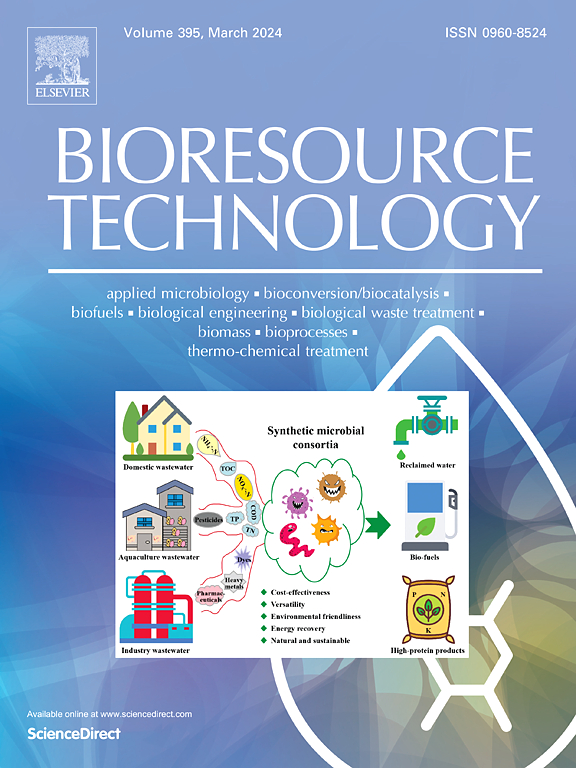Vacuum evaporation coupled with anaerobic digestion for process intensification and ammonia recovery: Model development, validation and scenario analysis
IF 9
1区 环境科学与生态学
Q1 AGRICULTURAL ENGINEERING
引用次数: 0
Abstract
A mathematical model for vacuum evaporation process was developed, which was experimentally validated at different initial pHs and temperatures for ammonia removal from anaerobically digested sludge. Six scenarios were evaluated by combining vacuum evaporation process with anaerobic digestion using anaerobic digestion model 1. These scenarios included a control, a pretreatment by vacuum evaporation, a post-treatment by vacuum evaporation at pH 9, a post-treatment by conventional evaporation (100 °C), an intensification with vacuum-concentrated recycled digestate back to the digester, and a second intensification at pH 9. Results indicated that using the evaporator as post-treatment at pH 9 or for intensification at pH 9 were the most favorable options, recovering more than 76 % of the nitrogen present in influent sludge with no negative effect on methane production. An economic analysis showed that the intensification at pH 9 was cost-neutral, significantly higher than the net present value of the control scenario (–22 M$).

真空蒸发与厌氧消化相结合,实现工艺强化和氨回收:模型开发、验证和情景分析。
建立了真空蒸发过程的数学模型,并在不同的初始 pH 值和温度条件下进行了实验验证,以去除厌氧消化污泥中的氨。通过使用厌氧消化模型 1 将真空蒸发工艺与厌氧消化相结合,对六种情况进行了评估。结果表明,在 pH 值为 9 时使用蒸发器进行后处理或在 pH 值为 9 时进行强化处理是最有利的选择,可回收进水污泥中 76% 以上的氮,且对甲烷产量没有负面影响。经济分析表明,在 pH 值为 9 的条件下进行强化处理不增加成本,明显高于对照方案的净现值(-2200 万美元)。
本文章由计算机程序翻译,如有差异,请以英文原文为准。
求助全文
约1分钟内获得全文
求助全文
来源期刊

Bioresource Technology
工程技术-能源与燃料
CiteScore
20.80
自引率
19.30%
发文量
2013
审稿时长
12 days
期刊介绍:
Bioresource Technology publishes original articles, review articles, case studies, and short communications covering the fundamentals, applications, and management of bioresource technology. The journal seeks to advance and disseminate knowledge across various areas related to biomass, biological waste treatment, bioenergy, biotransformations, bioresource systems analysis, and associated conversion or production technologies.
Topics include:
• Biofuels: liquid and gaseous biofuels production, modeling and economics
• Bioprocesses and bioproducts: biocatalysis and fermentations
• Biomass and feedstocks utilization: bioconversion of agro-industrial residues
• Environmental protection: biological waste treatment
• Thermochemical conversion of biomass: combustion, pyrolysis, gasification, catalysis.
 求助内容:
求助内容: 应助结果提醒方式:
应助结果提醒方式:


